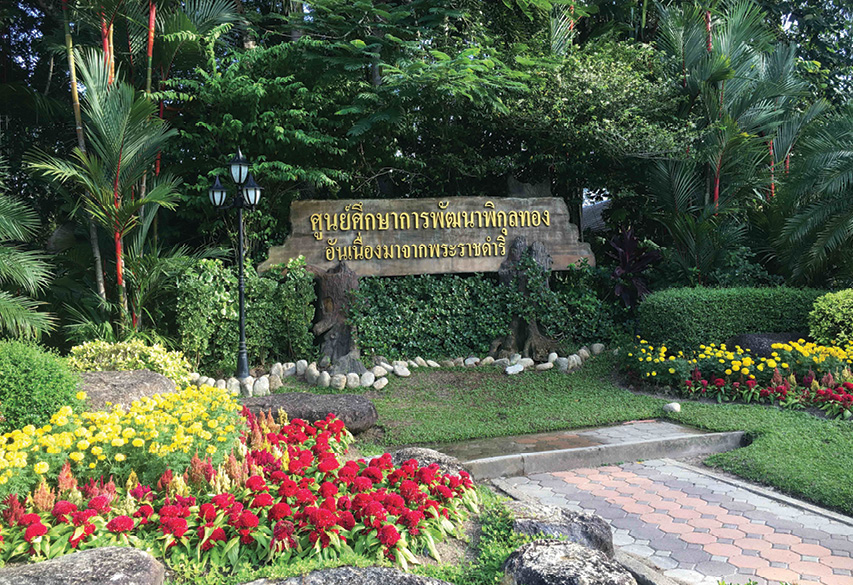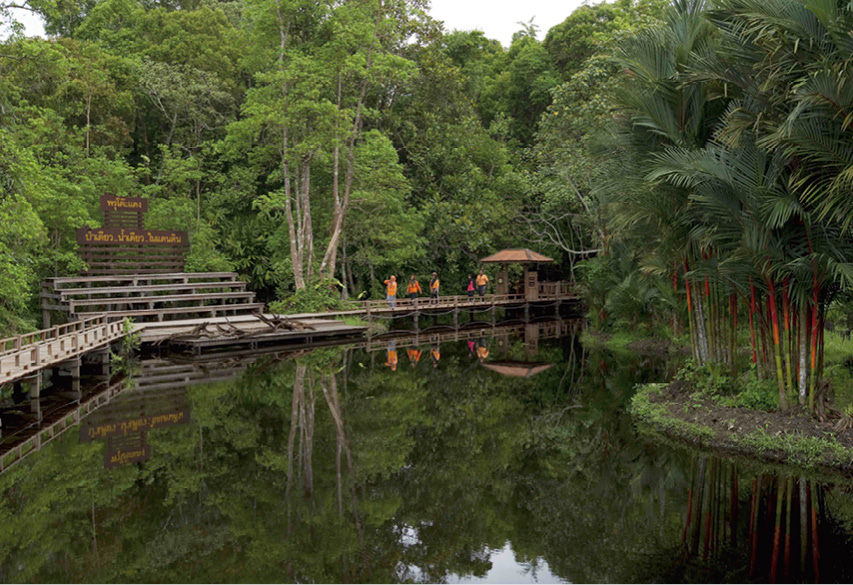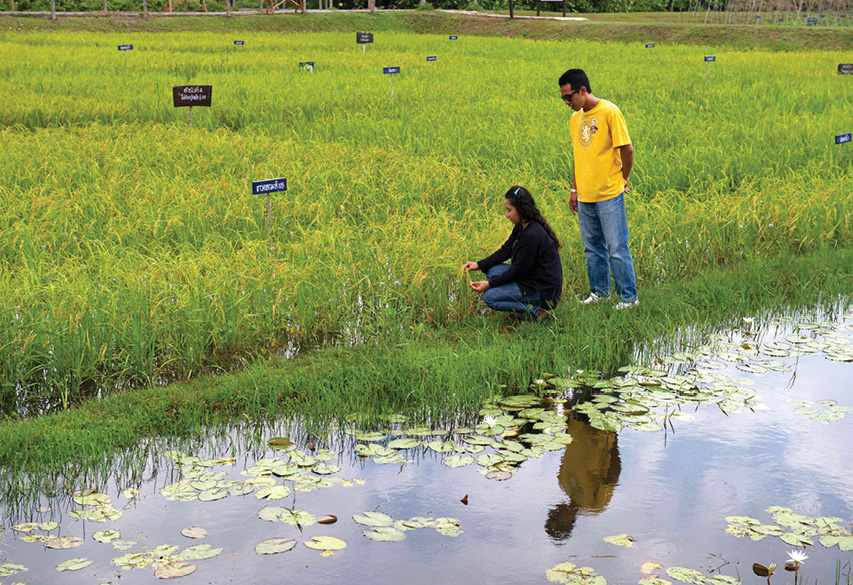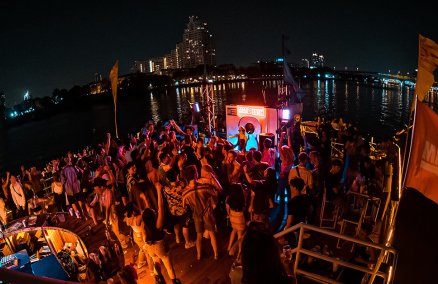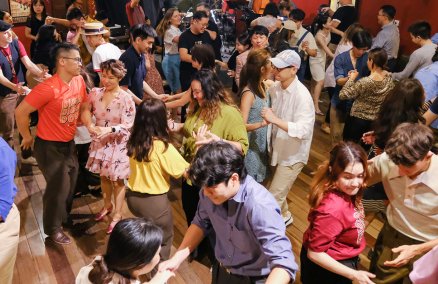Among His Majesty the late King Bhumibol Adulyadej’s long list of accomplishments, none may be more celebrated than the Royal Projects. He spent almost his entire life traveling around the nation to learn about the problems afflicting his people, which inspired a lifelong mission to solve them. These missions included efforts to preserve water resources, improve public health, create sustainable livelihoods and battle agricultural problems faced by impoverished farmers.
To date, nearly 2,000 Royal Projects have come and gone, and many have had a profound impact on the way Thais live and view the world today. While these efforts are often celebrated for their on-paper success, there has been a pleasant side effect: boosts in tourism. Many of the research and development centers around the country are now booming attractions for Thais and foreign visitors, teaching them about the nation’s history, struggles and achievements. In Thailand’s deep south, the late King Bhumibol’s initiatives have had the same effect.
“Most of the king’s Royal Projects provided opportunities to study various regions and discover the attractions they offered,” says Narisa Leelathawornpanya, founder of Namo Kiddee, a content creation company that manages many of the government’s travel magazines, such as DASTA Travel, the nation’s first sustainability-focused travel magazine funded by the Designated Areas for Sustainable Tourism Administration.
“The Royal Projects are intriguing to travelers interested in local development and sustainability,” she continues. “This was especially true in the south, where much of HM King Bhumibol’s water management projects were located, such as the Pak Phanang Basin Area Development Project in Nakhon Si Thammarat.”
The Pak Phanang basin is widely regarded as a shining example of the king’s wisdom. During the rainy season, nearby saltwater would flood the region, leaving the farmers who lived there without enough fresh water to feed their crops and sustain themselves. His Majesty examined the problem, and designed an innovative, 521,500-rai irrigation system complete with a complex network of canals, pump stations and water gates. After three years of construction, the system was complete, and the flow of saline-saturated water that plagued the region stopped. Today, the project holds more than 70 million cubic meters of fresh water for farmers to both drink and use on their crops.
The king’s dedication to solving irrigation problems can be seen in other parts of the south as well. In Chumphon, the Nong Yai Area Development Project helped put an end to a decades-long cycle of destructive floods that were ruining the livelihoods of locals, while in Pattani, the king was able to solve saltwater issues in Sai Buri district.
These successes certainly stand out, but the majority of the king’s efforts to help the south were concentrated in the province of Narathiwat, where the royal family frequently visited for more than 50 years. Staying at the Thaksin Ratchaniwet Palace for two months each year, HM the King and other Royal Family members used the residence as a base camp to start more than 884 Royal Projects in the south. Of those, 378 were in Narathiwat, and 293 dealt with water management and agriculture.
Pikun Thong Royal Development Study Center
The most lauded of these projects was the Pikun Thong Royal Development Study Center, founded in 1981, which is considered by many to be one of the most challenging agriculture initiatives in all of Thailand. At the time, the majority of those who lived in Narathiwat relied heavily on agriculture to generate income, but the province’s low-lying position and plethora of peat swamps meant much of its organic soil remained flooded year-round. As a result, the soil was rife with pyrite, also known as iron sulfide, leaving it highly acidic and largely unusable for agriculture. Year after year, the region was slowly becoming a wasteland for farmers who had less and less means to grow their crops.
After seeing this with his own eyes, HM the King devised his now-famous glaeng din, or “bullying the soil,” project and founded the Pikun Thong Royal Development Study Center in Narathiwat with the aim of removing pyrite from the soil. But in order to first make things better, the king and his team had to make them worse—pumping water in and out of the soil to maximize its acidity. Then, after four years of research, an unlikely solution was identified: lime. Royal researchers discovered that adding lime to the soil with a combination of water control and fresh topsoil successfully returned the region’s arable lands to a healthy pH balance.
Since that discovery, more than 300 agricultural researchers have studied Narathiwat’s soil, often hunting for innovative ways to grow foundational crops such as rice, sugarcane and even palms, which had never been grown successfully in the region before the Royal initiatives. After these successes, the research site blossomed into a vibrant tourist attraction, and today teaches thousands of visitors each year about Narathiwat’s history of agricultural research.
“We maintain both good and bad plots of crops to show visitors,” says Saiyud Petchsuk, the director of the Pikun Thong Royal Development Study Center. “Most of them are academics or farmers, and we try to provide them with evidence that they can find similar solutions to ours if they follow these methods. It’s the king’s way of teaching: learn by doing. It’s truly a living agriculture museum.”
Phru Toh Daeng
A host of other Royal Projects in the region have been successful in attracting tourists from both inside Thailand and its Southeast Asian neighbors. One such project is the Sirindhorn Peat Swamp Forest Nature Research and Study Center, initiated by Princess Maha Chakri Sirindhorn and located in one of the last remaining peat swamp forests in Thailand—the 7,000-year-old Phru Toh Daeng. The center not only works actively to save the region from invasive plant and animal species, but also offers one of the best hiking and animal watching experiences in the country and attracts a range of foreign and local tourists.
Sustainability has long been a core tenant of HM King Bhumibol’s renowned Sufficiency Economy Philosophy. This doesn’t simply mean only using what you need, it means finding balance and growth. The success of the Royal Projects throughout Thailand’s south have not simply improved the wellbeing of local communities, they are conduits for history, learning and sustainable tourism.
“If you’re seriously interested in travel and want to learn about sustainable development it’s hard to imagine more informative, beautiful and inspiring locations in Thailand than the Royal Projects,” says Narisa. “These places give you the opportunity to learn and see the process of sustainability with your own eyes. They also help us to realize what a generous and kind developer the late king was. After all, he dedicated all 70 years of his reign to elevating the lives of Thais everywhere.”
Pikun Thong Royal Development Study Center
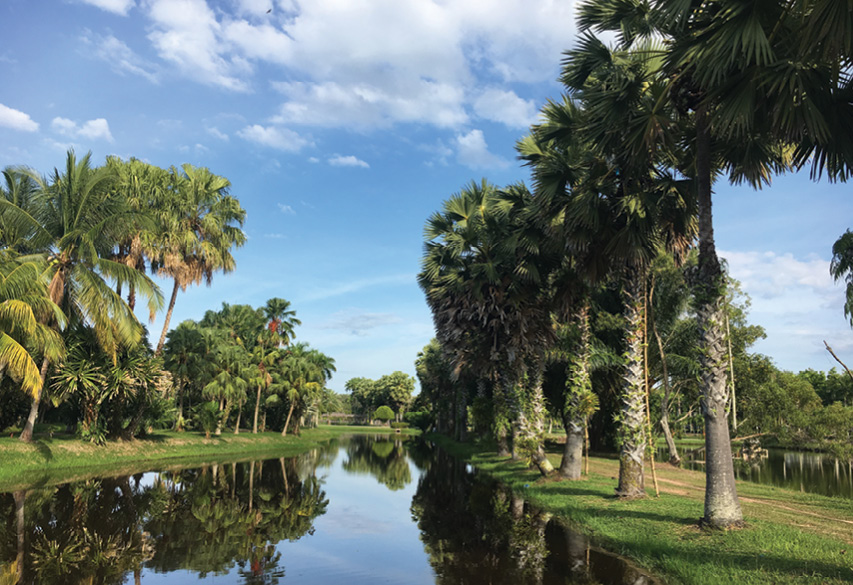
Pikun Thong Royal Development Study Center











